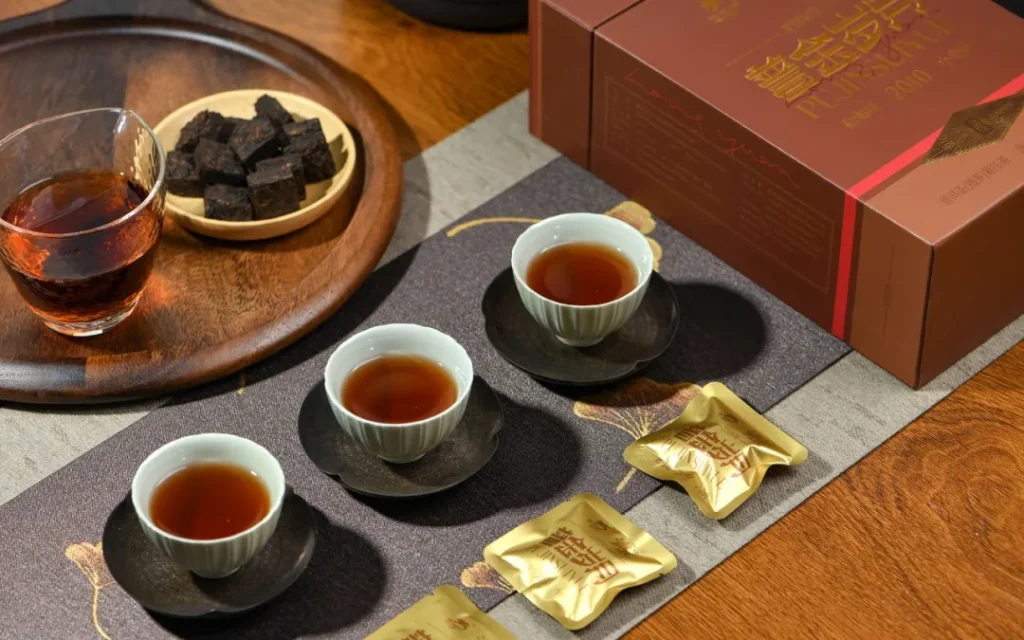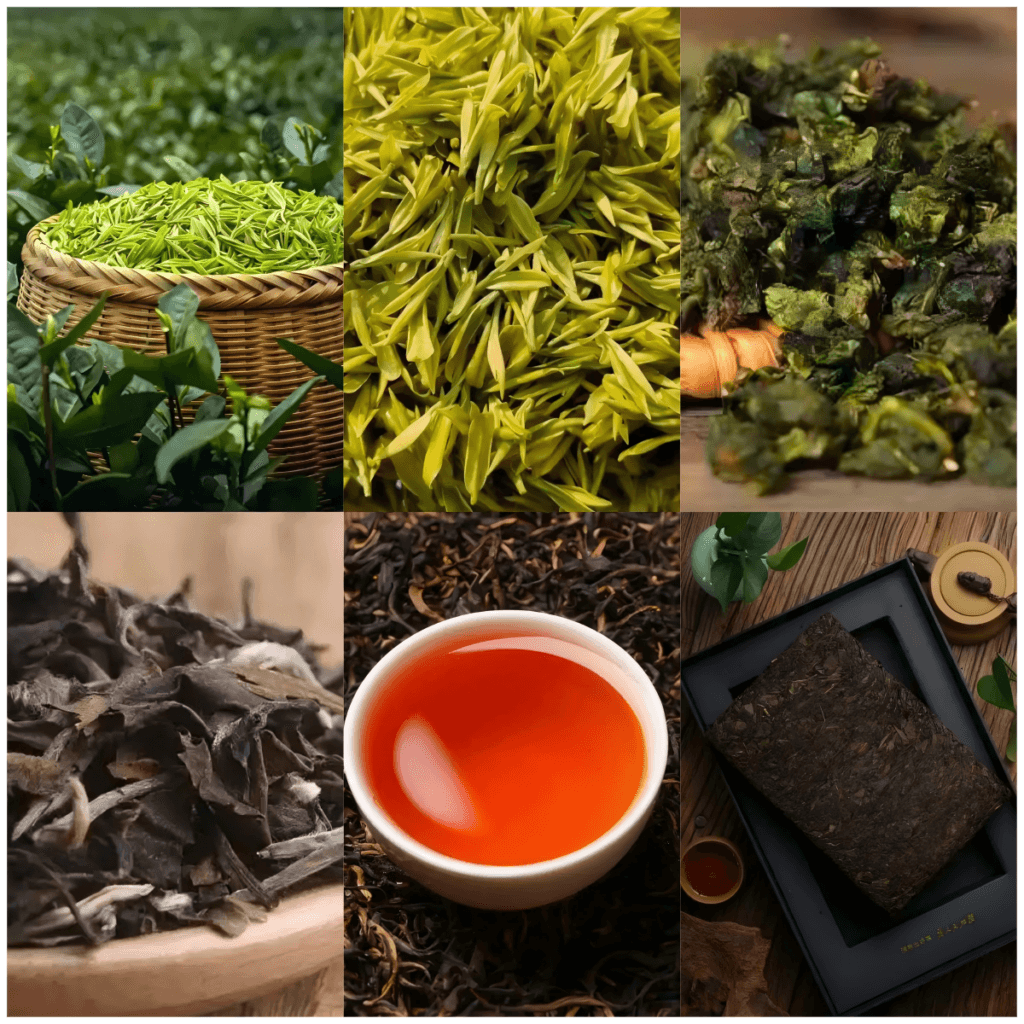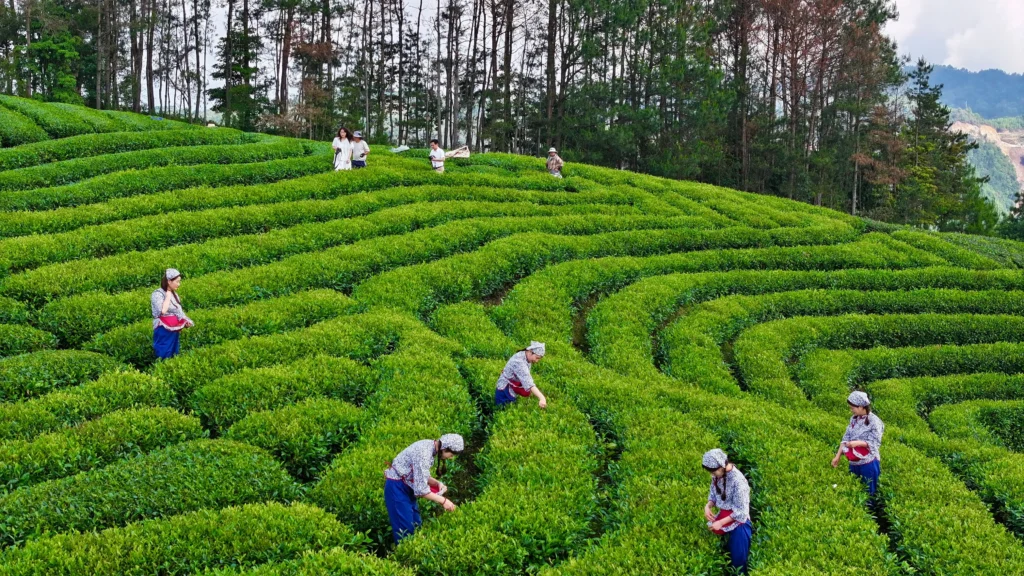Tea: A Gift of Nature and a Messenger of Health
Tea, the marvelous leaf originated from China, has been closely connected with human life since ancient times.It is not only one of the world’s three major beverages, but also an important carrier of Chinese culture. There are many kinds of tea, according to different processing technology and biochemical reaction, mainly divided into green tea, yellow tea, hvítt te, grænt te (oolong tea), black tea and black tea six categories.

一. Types and characteristics of tea
1.Grænt te: green tea is unfermented tea, and its processing technology mainly includes withering, greening, kneading and drying. Killing is the key step, through high temperature to quickly destroy the enzyme activity in the tea, to prevent the oxidation of tea polyphenols, retaining the fresh green color and nutrients of the tea. Green tea is characterized by “clear broth and green leaves”, clear and transparent tea broth, bright green tea leaves, sweet taste and tender or roasted aroma. Xihu Longjing, Dongting Biluochun, Huangshan Maofeng and Xinyang Maojian are the best green teas.
2.Yellow Tea: Yellow tea is a lightly fermented tea, similar to green tea, but with the addition of a smothering step after greening and kneading. Smothering makes the tea leaves oxidize naturally under hot and humid conditions, forming a unique yellow color. Yellow tea is characterized by “yellow leaves and yellow soup”, soft taste and unique aroma. Junshan Silver Needle, Mengding Yellow Bud and Huoshan Yellow Bud are the representatives of yellow tea.
3.Hvítt te: White tea is a micro-fermented tea, and the process mainly includes withering and drying. During the withering process, tea leaves undergo slight natural oxidation, retaining a large amount of tea polyphenols and amino acids, forming the unique quality of white tea. White tea is characterized by a lot of white fuzz, light soup color, and a light taste with a natural sweetness. White Hair Silver Needle, White Peony, Gong Mei and Shou Mei are the classics of white tea.
4.Grænt te (Oolong Tea): Green Tea is a semi-fermented tea, which is characterized by the damage to the edges of the tea leaves during the greening process, which promotes the local oxidation of polyphenols and creates the characteristic of “green leaves with red edges”. Green tea is characterized by green leaves, orange soup color, rich taste, both the fragrance of green tea, and black tea mellow. Wuyi Rock Tea, Dahongpao, Anxi Tieguanyin and Phoenix Single Fir are the finest green tea.
5.Svart te: Black tea is a fully fermented tea, the process includes withering, kneading, fermentation and drying. During the fermentation process, the tea polyphenols are completely oxidized, forming theaflavin, thearubigin and other substances, which makes black tea show the characteristics of “red leaves and red soup”. The taste of black tea is stimulating and thick, with a strong flavor of flowers and fruits. Zhengshan Xiao Seed, Qi Hong, Dian Hong and Ning Hong is the best of the black tea.
6.Svart te: Black tea is a post-fermented tea, and the processing technology includes withering, greening, kneading, piling and drying. Wadding is a unique step for black tea, which makes the tea leaves oxidize slowly under humid conditions to form a unique flavor. Black tea is characterized by oily black or brownish green leaves, brownish yellow or brownish red soup, and mellow taste with aged aroma. Puerh tea, Liu Bao tea and Anhua black tea are the representatives of black tea.

二、Tea efficacy and function
Tea not only has a unique taste and aroma, but also contains a wealth of nutrients and biologically active substances. These substances have a variety of biological activity on the human body, with brain refreshment, diuresis and swelling, summer cooling, cardiovascular protection, improve gastrointestinal function and other effects.
1.Wake up and refreshment: the caffeine in tea can prompt the human central nervous system, enhance the excitability of the cerebral cortex, thus playing the role of wake up and refreshment.
2.Diuretic: Tea has diuretic effect, for all the causes of fluid metabolism disorders have a certain role in alleviating.
3.Preventing heatstroke and lowering temperature: the chemical composition of tea and saliva in the mouth chemical reaction, so that the mouth can be moisturized, producing a cool feeling, help prevent heatstroke and lower the temperature.
4.Cardiovascular protection: catechins and tea polyphenols in tea can improve microcirculation, promote fat metabolism, reduce the occurrence of hyperlipidemia, and have a certain cardiovascular protection.
5.Improve gastrointestinal function: catechins in tea can improve gastrointestinal function, promote gastrointestinal peristalsis, and help the body improve digestion and absorption.

三、Tea brewing and tasting
1.Different types of tea have different instructions when brewing. For example, green tea is suitable for brewing with a glass cup, you can watch its form, so that its natural stretching, containing substances slowly released; black tea should not be smothered, as soon as possible after the injection of water out of the soup, in order to get a sweet and refreshing taste; black tea in the brewing of the first bubble to run a little discarded not to drink, so that the tightly pressed tea to fully unfold, dispersal of foreign gas, the second bubble better drink.
2.When tasting tea, you can start from the tea color, aroma, taste, soup color and leaf bottom, etc., and comprehensively judge the quality of tea. Á sama tíma, brewing techniques and environment will also have an impact on the tasting results.

四、concluding remarks
As a gift of nature and a messenger of health, tea has been integrated into human life and culture. It is not only a drink, but also a symbol of culture and spirit. Let us savor the aroma of tea and at the same time feel the profoundness of tea culture and the health and happiness brought by tea.
